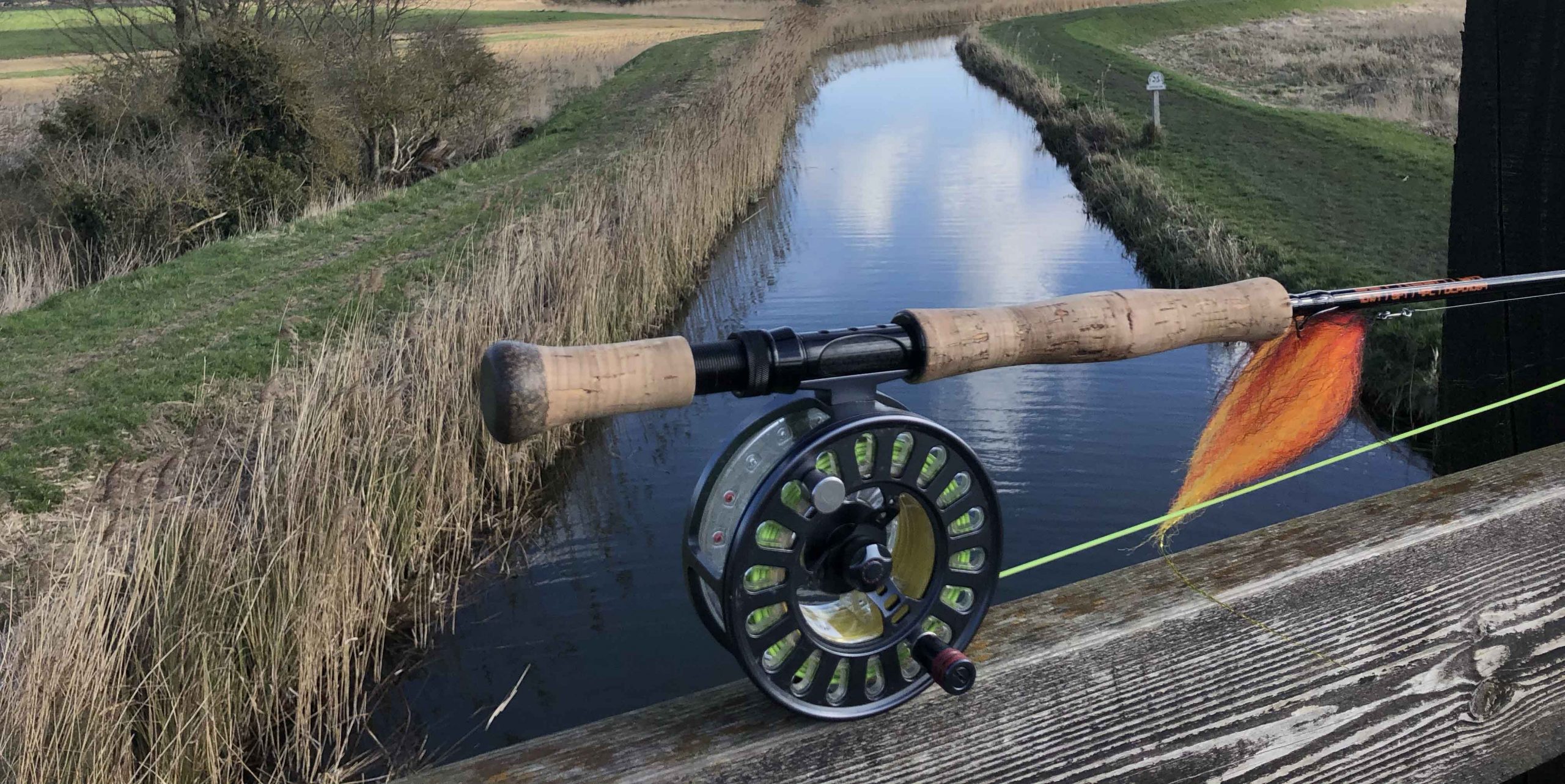Pike (Esox lucius) is one of the UKs biggest native predators with the record weight at 50lbs & a very rewarding fish to fly fish for. The takes can be as subtle as a trout to aggressive takes, often taking the fly right by your feet!
Despite the bad boy reputation of Pike, they are in fact VERY fragile; so every care must be taken while fighting, landing, unhooking & releasing.
Below is a break down of things you’ll need to start targeting Pike.
– Fly Rod weight: 9W minimum to help cast the big flies & in the warmer months; to land the fish quickly. Medium to fast action is recommended. 9ft long is plenty. There are budget rods up to expensive ones, its up to you what you choose.
– Fly Reel: Large arbor is best to quickly wind in excess line.
– Fly Lines: Float & Intermediate are what most people start out with. Look for “Big Fly or Predator” lines, which have a short/aggressive head that help cast bigger flies & still get turn over.
– Leader: 30lbs by 4ft long for INT line or up to 6-8ft for float lines.
– Trace: 25-30lbs multi strand wire trace to avoid bite offs, look for knottable wire trace. Rio wire bite, Drennan E-sox super trace are both good. Some people prefer a heavy (80-100lbs) fluorocarbon trace. Tie trace to fly line with perfection loops both ends.
– Trace to fly: Various clips are used, make sure they are good for up to 30lbs. Quick Twist or Fast Links are quick to swap flies.
– Fly: Patterns that mimic Perch, all black or any of the common lure colours. Most are tied on to 4/0-6/0 single de-barbed hooks. Average Pike fly is 4″ up to 18″ hence the need for heavy weight fly rod. Search online to buy Pike flies if you don’t tie your self. If you tie your own, Youtube has lots of tutorials.
– Net: Very large, rubber coated are best. Savage Gear does a large folding net, which is commonly used amongst Pike anglers.
– Unhooking Mat: A must if you are fishing on hard dry ground or concrete. Some fisheries/events have strict rules that you must have one with you. Best to check with them before you go.
– Forceps/Pliers: Minimum 9-12″ long forceps or very long nose pliers to reach past the 300-600 teeth to get your fly out.
– Unhooking glove: Recommended for newcomers to Pike angling, But be aware that the glove can get snagged in the Pikes gill rackers & cause damage.
Tips for Pike
Unhooking a Pike can be daunting, but once you have done it a few times. it gets much easier. Leave the fish in the net, in the water while you get your unhooking equipment ready. If using a unhooking mat, make sure it’s wet as a dry surface damages the fishes slime coat that it needs to protect its self from infections.
Lift the fish out of the water with the net & gently lay the net on the ground or on to the unhooking mat.
Get on your knees, straddle the fish with its head out in front of you to stop it from flapping around.
Carefully roll the Pike on to its back.
Carefully put your left hand fingers just under the fishes right side gill plate, Remember opposites your hand to fishes gill plate.Slide your fingers up toward the chin & you’ll find a hard bony tongue.
Grip the tongue & lift the head towards you. This naturally opens the pikes mouth.
Using the long forceps or pliers, get a good grip on the fly & CAREFULLY remove.
Now its time to get the Pike back in the water to recover ASAP. Lift the fish with your net back in to the water, use your hand to keep it upright for as long as it needs to recover; longer in Summer as the oxygen in the water is lower. Once the fish is recovered, lower the net to let it go. Check out THIS youtube vid as well, its also a very good idea for newcomers to Pike fishing to go with someone who’s done this before for the first couple of trips.
For more information
Why not try a Pike on fly introduction session? You don’t need to own a Pike fly rod as gear is provided. Link HERE
Pike Fly Fishing Association has a lot of experienced Pike on fly anglers to help you fine tune things. Link HERE
